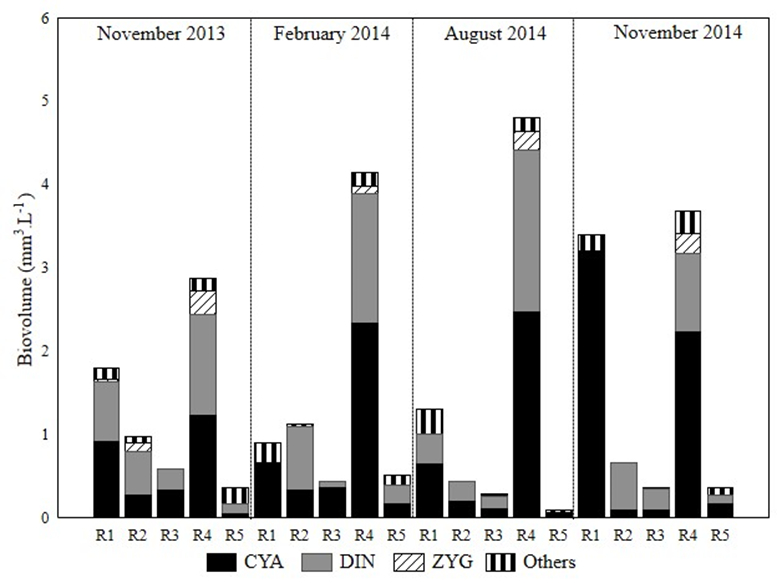Abstract
Aim
We aimed to characterize the structure of the phytoplankton community and identify the main environmental factors driving the community in five reservoirs constructed in the region of the high Paraná River.
Methods
The phytoplankton and environmental variables were collected at the lacustrine region of the reservoir, between November 2013 and November 2014, with interval between collections ranged from 3 to 6 months. The richness and biomass of the phytoplankton community were measured as a response to the spatial and temporal environmental variability. Data from environmental variables was analyzed by Principal Component Analysis (PCA). Non-Metric Multidimensional Scaling Analyzes (NMDS) were performed on the richness and biomass data of the phytoplankton community.
Results
We identified 80 taxa distributed in 11 taxonomic classes, from which Cyanobacteria and Chlorophyceae were best represented. We did not observe significant temporal variation for either environmental variables or attributes of the phytoplankton community, which may be related to the prolonged drought in this period in the Brazilian Southwest. Higher phytoplankton richness and biomass were found in the Três Irmãos (Tiete River), reservoir located in the most anthropized basin in the country. Cyanobacteria and dinoflagellates dominated the biomass in all reservoirs during the studied period. The Ilha Solteira, Jupiá and Porto Primavera reservoirs showed a tendency to decrease in the values of phytoplankton richness and biomass, and the reservoirs built in series in the Paraná River probably have strong interdependence, according to the CRCC concept.
Conclusions
Spatial variation in phytoplankton attributes was influenced mainly by the position occupied by the reservoir in the hydrographic basin, water retention time (RT) and nutrient concentrations in each reservoir.
Keywords:
community structure; cyanobacteria; Paraná River; reservoir; water retention time

 Thumbnail
Thumbnail
 Thumbnail
Thumbnail
 Thumbnail
Thumbnail
 Thumbnail
Thumbnail
 Thumbnail
Thumbnail
 Thumbnail
Thumbnail





